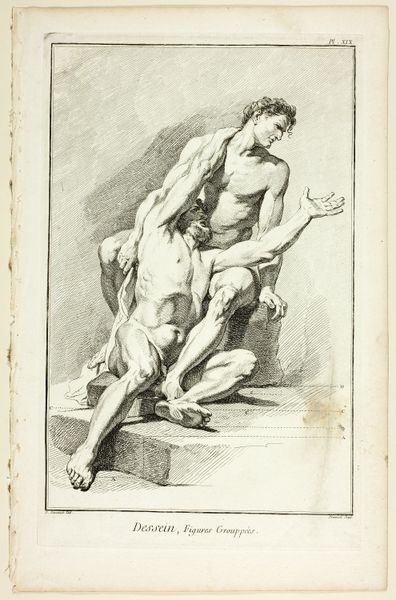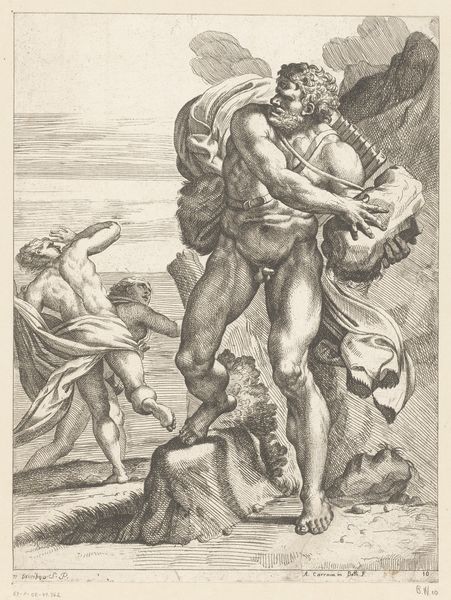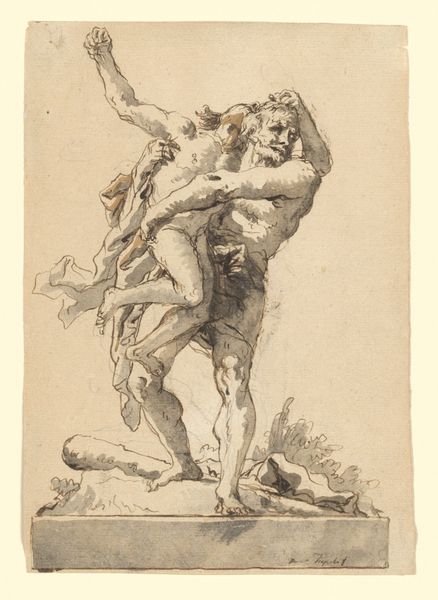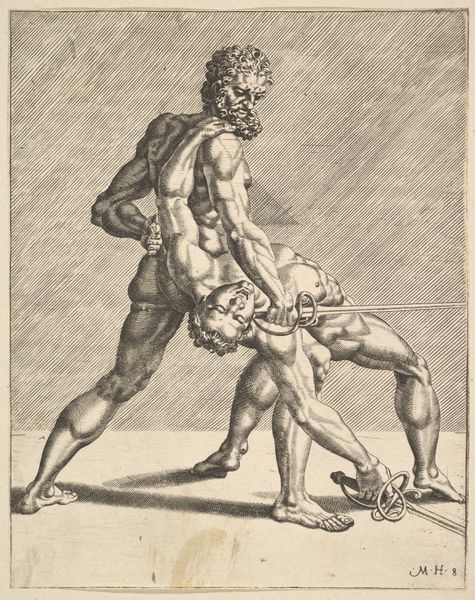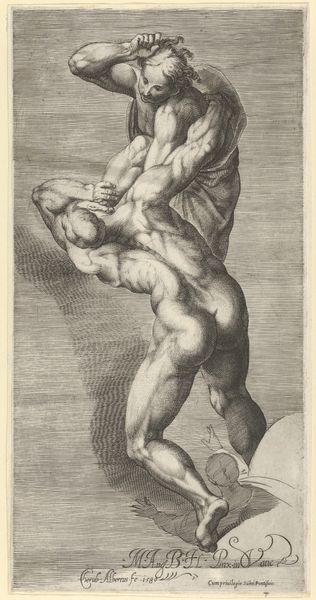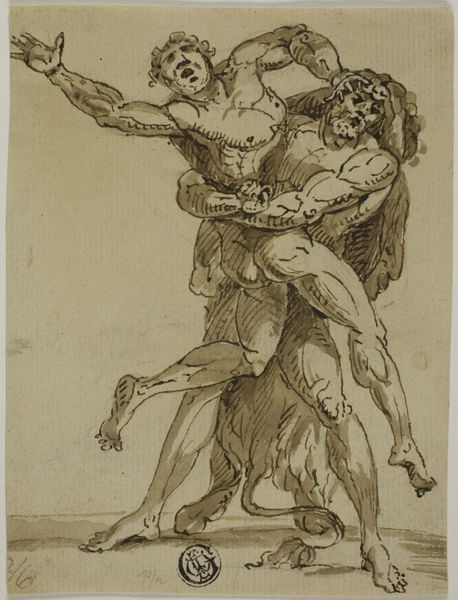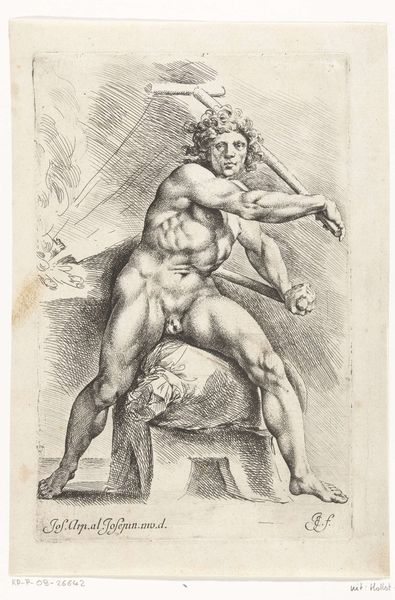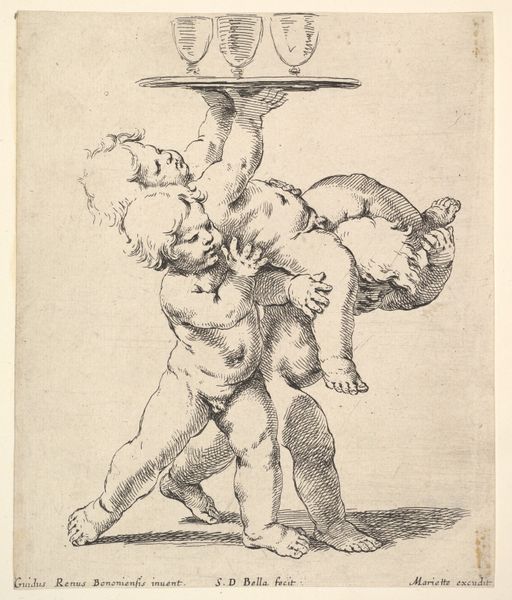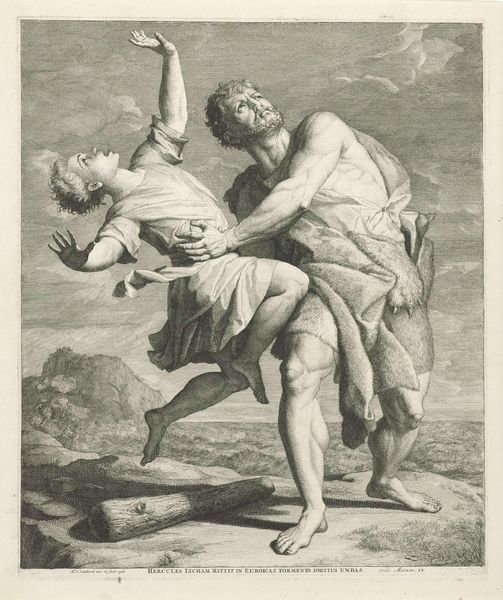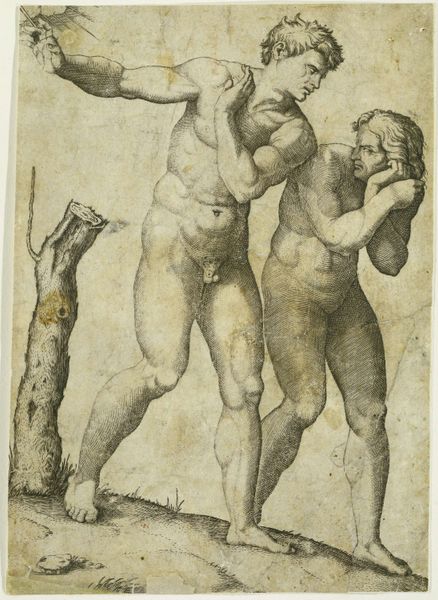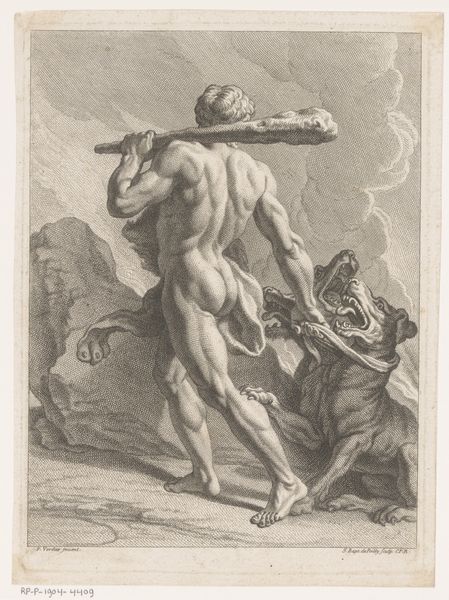
Hercules and Antaeus (with a ledge Below) 1771 - 1800
0:00
0:00
Dimensions: 7 7/8 x 5 1/2 in. (20 x 14 cm)
Copyright: Public Domain
Curator: This captivating drawing is attributed to Giovanni Domenico Tiepolo and dates between 1771 and 1800. The piece, rendered in ink and pencil, depicts the mythological struggle between Hercules and Antaeus. Editor: Immediately, I'm struck by the dramatic diagonals created by the figures' bodies. It's almost a vortex, drawing my eye relentlessly upwards. The limited palette, the greyscale tones, reinforces this sense of violent energy. Curator: Indeed. The image embodies the narrative of Hercules’s triumph over Antaeus. Tiepolo highlights a crucial part of the myth. Antaeus, a giant, drew strength from contact with the Earth, his mother. Hercules, realizing this, lifts Antaeus into the air, breaking his connection to the earth and ultimately defeating him. This embodies the shift from archaic to enlightened thought, the victory of reason. Editor: Semiotically, the bodies are fascinating. Hercules is muscular, the embodiment of controlled power. Look at his clenched fist! Whereas Antaeus, limbs flailing, signifies utter helplessness. That tension—between resistance and submission, power and vulnerability—is palpable. Curator: Tiepolo masterfully captures that psychological tension. It's a visualization of the transition between ages, with the hero representing order subduing chaos. Editor: It's also intriguing how Tiepolo uses the negative space, the areas left untouched by ink or pencil, to suggest atmospheric perspective. It creates a powerful contrast with the defined musculature. He is creating a symbolic landscape. Curator: And if you look closely at the base, beneath the struggle, you can see sketched lines, a grounding—a prior image? The ledge suggests something supported or superseded. An entire narrative embedded underneath the primary scene. Editor: So many potential readings, all emanating from these stark formal qualities. It brings us back to examining art's intrinsic structure. Curator: And to recognizing that within these carefully placed lines resides so much more. Cultural memory, symbolic landscapes—all informing our understanding of art history itself.
Comments
No comments
Be the first to comment and join the conversation on the ultimate creative platform.
